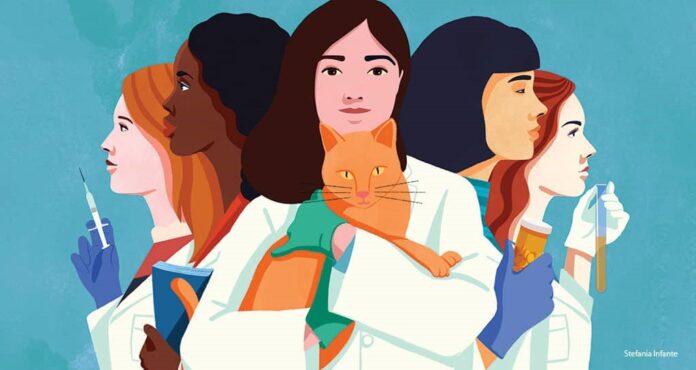Management of Fetal Maceration in doe: A Rare Case Report
Nikita Singh1, Charu Singh2
Department of Veterinary Gynaecology and Obstetrics
College of Veterinary Science and Animal Husbandry
Acharya Narendra Deva University of Agriculture and Technology
Kumarganj, Ayodhya, U.P.
1Author 2 Co-Author
Abstract
A 4-year-old pluriparous Barbari doe weighing 30kg with about 5 months of pregnancy was presented to our Veterinary Clinical Complex, ANDUAT Ayodhya (U.P.) with a complaint of anorexia and a scanty amount of blood-tinged discharge coming from external genitalia in the last 2 days. The animal was initially treated by field quacks with Pragma* (PGF2- alpha analogue: Cloprostenol) and Tonophosphan*. Clinical examination revealed that the foul-smelling, reddish brown-coloured discharge from the vagina. On per-vaginal examination with proper lubrication, the cervix was found to be almost completely closed. Other vital parameters like body temperature (RT of 102.6°F), mucous membrane colour (pink), respiration, and heart rate were normal. On the basis of history and clinical examination, it was decided to perform a laparo-hysterotomy in lateral recumbency through left flank approach under regional anaesthesia (inverted L and local infiltration at the site of the oblique incision. Subsequently, a laparo-hysterotomy was carried out successfully, and a macerated foetus was delivered. Post-operatively, the animal was given ceftriaxone and tazobactam @ 10mg/KG B.Wt, meloxicam @ 0.2mg/Kg B.Wt, and B-complex vitamins for 6 days. The regular antiseptic dressing of the surgical wound and proper post-operative management enhanced the animal’s recovery.
INTRODUCTION
Maceration occurs when the dead fetus fails to abort, and an event of deat , emphysema, putrefaction and autolysis of soft tissue occurs, leaving only bones that are remain floating in the uterus.
Maceration occurring when endocrine support of pregnancy is lost. It may occur at any stage of gestation and has been observed in all species.
It is a common squeal of fetal mummification and occurs in the event of fetal death after formation of fetal bones (after 100 days of gestation) in small ruminants.
Embryonic death and maceration are probably caused by variety of miscellaneous organisms that may be found in the uterus or can enter through dilated cervix.In cases of early fetal maceration the cervix may be tightly sealed or some discharge of pus maybe evident in the vagina.
CASE DETAIL AND HISTORY OF ANIMAL
SPECIES GOAT
PARITY-4
BREED-BARBARI
WEIGHT-30 kg
AGE-4 YEARS
With about 5 months of pregnancy was presented to our Veterinary Clinical Complex, ANDUAT Ayodhya (U.P.) with a complaint of anorexia and a scanty amount of blood-tinged discharge coming from external genitalia in the last 2 days.
Initially the animal was unsuccessfully treated by field quacks with Pragma (PGF2-alpha analogue: Cloprostenol) and Tonophosphan.
CLINICAL OBSERVATION
Rectal temperature- 102.6°F
Mucous membrane- Pink
Respiration rate- 24/minute
Heart rate- 85/minute
➤ Clinical observations revealed, the foul-smelling, reddish brown-colored discharge from the vagina.
On abdominal palpation, single fetus was felt.
➤ On per-vaginal examination, with proper lubrication by using CMC,the cervix was found to be almost closed.
DIAGNOSIS ON THE BASIS OF:
1)ANAMNESIS
2)CLINICAL SIGNS
3)PER VAGINAL EXAMINATION
4)FETAL ASSESSMENT
TREATMENT
Cesarean section
Surgical site prepared aseptically.
Under regional anaesthesia (2% Lignocaine) in inverted L-block and local infiltration at the site of the oblique incision.
A laparo-hysterotomy in lateral recumbency through left flank approach was carried out successfully.
POST OPERATIVE TREATMENT
Rx
1) Inj ceftriaxone and tazobactam @ 10mg/KG B.Wt
2) Inj meloxicam @ 0.2mg/Kg B.Wt,
3) Inj tribivet @1 ml/100Kg B.Wt for 6 days.
Regular antiseptic dressing of the surgical wound and proper post-operative care was adviced.
Suture were removed after 12 days on wound healing.
Animal was recovered uneventfully.


